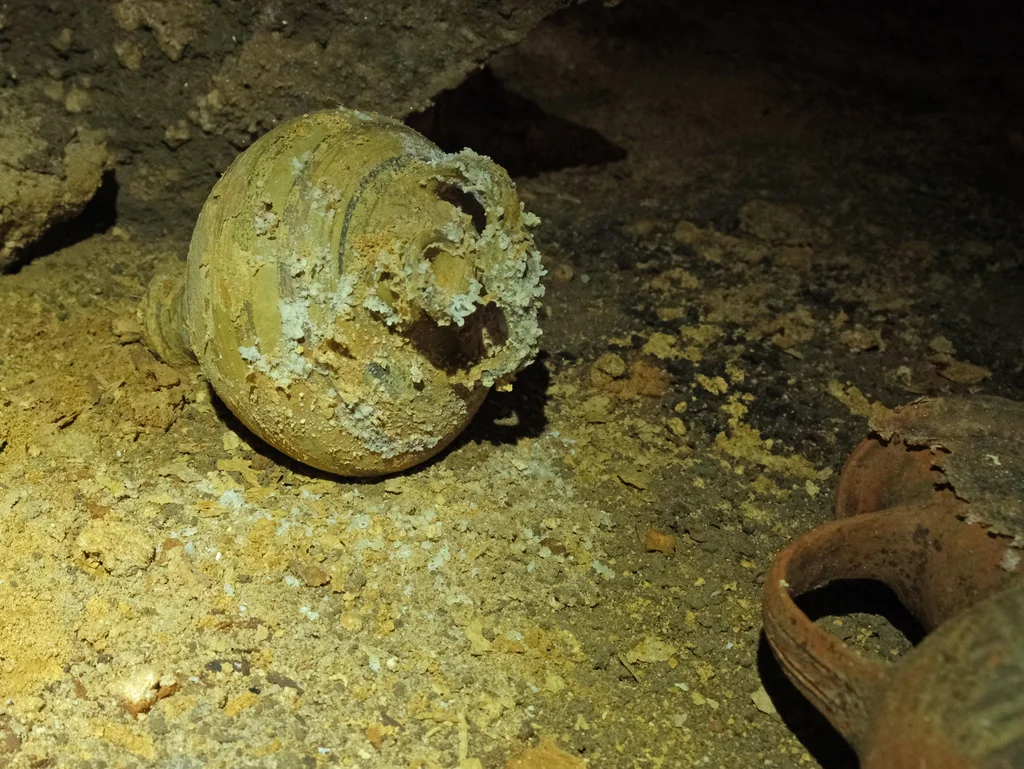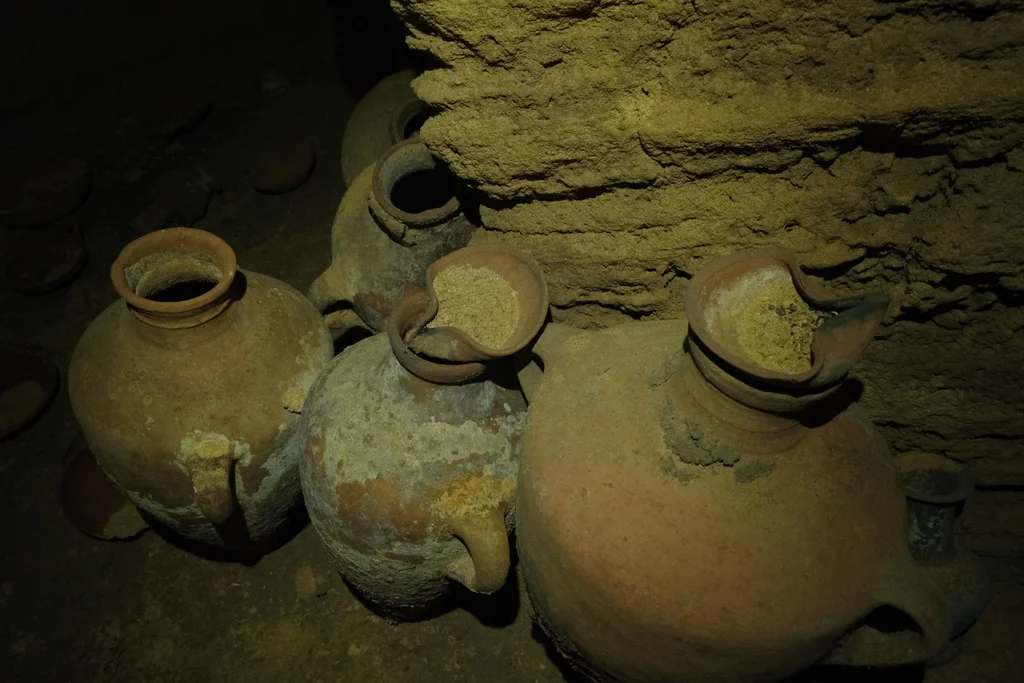Late Bronze Age Tomb Opened in Israel
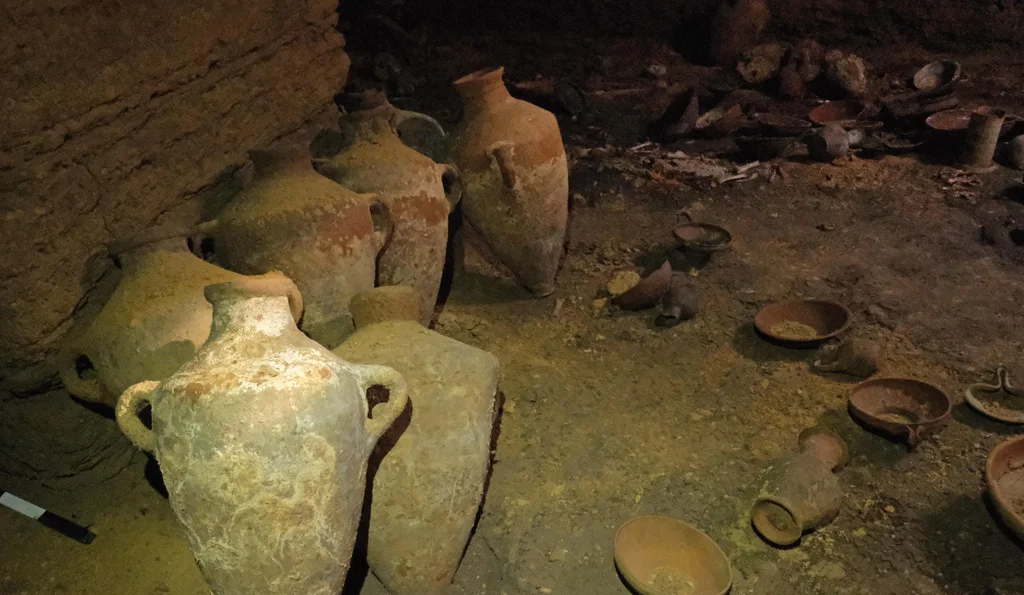
An intact ancient burial cave – a rarity in and of itself – has been discovered on the southern Israeli coast, the Israel Antiquities Authority announced Sunday.
A tractor moved a rock during construction for a new park by Kibbutz Palmahim and thusly Dror Czitron, an inspector for the Nature and Parks Authority, became the first to gaze on the grave for over 3,300 years.
Literally, the first: the grave had not been robbed, confirms Eli Yannai, an expert on the Bronze Age at the IAA. However, the second may have been the first robber after all these centuries: there are indications that after the cave’s discovery, somebody did go in, mucked about and stole some items, though leaving most, the IAA says. It is investigating with vigor, it adds.
Anyway, among the grave goods the latter-day thief left behind, meant to serve the deceased in the afterlife, archaeologists found intact pottery and bronze vessels, exactly as they had been put into the tomb in the 13th century B.C.E.: amphorae and bowls of various types and forms, cooking vessels and oil lamps. They also found tiny vessels that had held small amounts of precious substances, which apparently hailed from Tyre, Sidon and other ports in Lebanon.

Yes, the archaeologists also found the gear of hostilities: arrowheads and spear tips made of bronze, which seem to have been associated with an organic material that did not survive the trauma of time.
“It’s the find of a lifetime,” says Yannai. “It’s like a set from ‘Indiana Jones’ – a cave with vessels on the floor that haven’t been touched for 3,300 years. The period is Late Bronze Age – exactly the time of the notorious pharaoh, Ramesses II … The cave provides a full picture of burial traditions in the Late Bronze Age.”
Ramesses II is credited with expanding ancient Egypt’s sway as far as modern Syria to the northeast and Sudan to the south. In other words, the burial cave dates to a time when ancient Egypt ruled the land that is today Israel.
The burial chamber had been carved into the bedrock in the form of a square, with a pillar supporting its ceiling. In contrast to (slightly earlier) burials found in the vicinity of Israel’s southern coast, it seems to have served a family or clan, Yannai says.
Other graves, albeit from the 14th century B.C.E., not the 13th, each served to inter one body. However, not much more about the bodies can be said: in contrast to the grave site itself, their preservation is poor, precluding the possibility of DNA extraction and analysis.
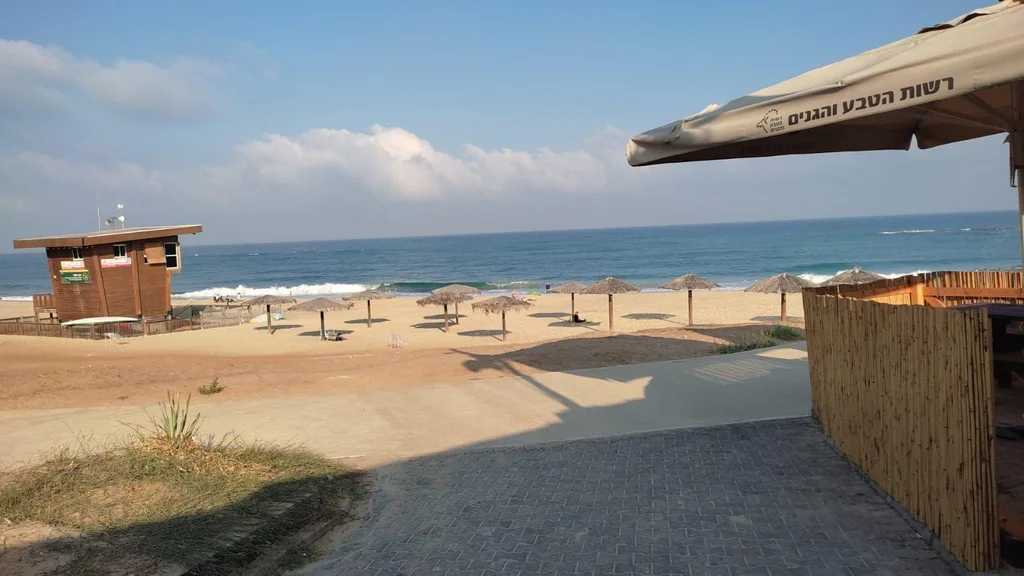
That said, Yannai believes it reasonable to assume that they were local people living on the coast, who – based on some of the grave goods – had a brisk trading relationship with Cyprus, Lebanon and Syria.
However, what settlement they may have been associated with, we do not know. “It may have been lost to the sea over time,” Yannai says. All along the coast, people were sailing out from makeshift “pirate” ports – notably at the mouth of the Soreq River where it pours, or trickles these days, into the Mediterranean Sea.
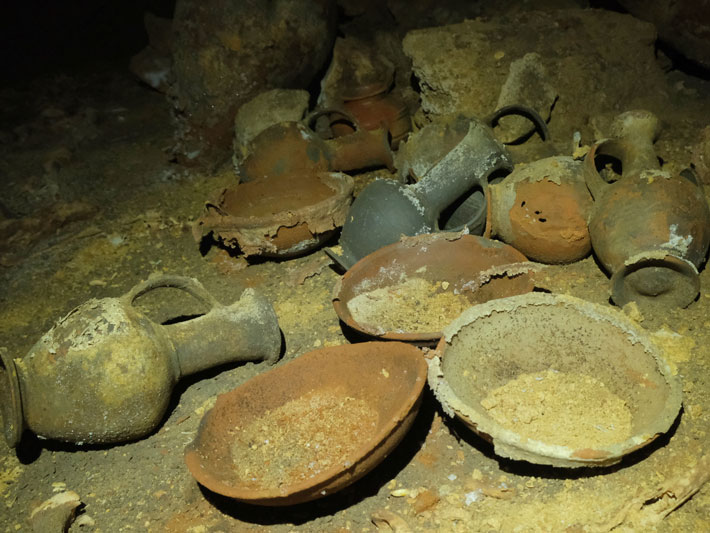
It is plausible that smaller traders would seek to avoid using the port services of the big cities, Jaffa and Ashkelon, which were the fief of the big merchants and would gouge them on fees, he explains. So possibly, the denizens of this untouched burial cave were “pirates” of that sort, or at least had possessions from them to take to the afterlife.
Some of the bodies had been laid on their back; some seem to have supplanted earlier bodies, which were moved, he adds. In any case, it seems the cave was used over generations.

As said, the identity and affiliations of the deceased remain a mystery for the time being. But there is the hope of being able to analyze the organic residue in the vessels, Yannai says, which could shed light on at least one enigma: what they liked to eat.
